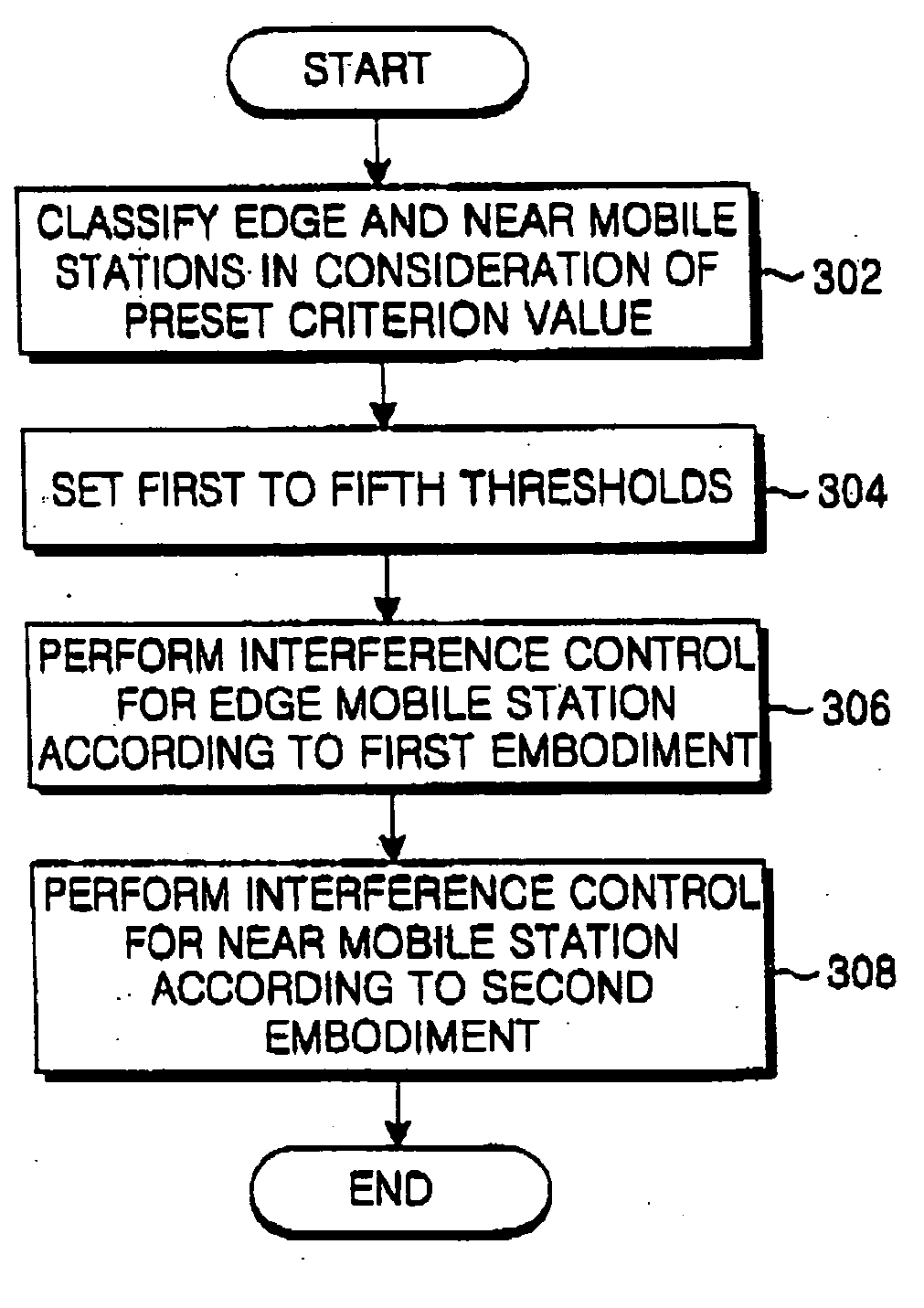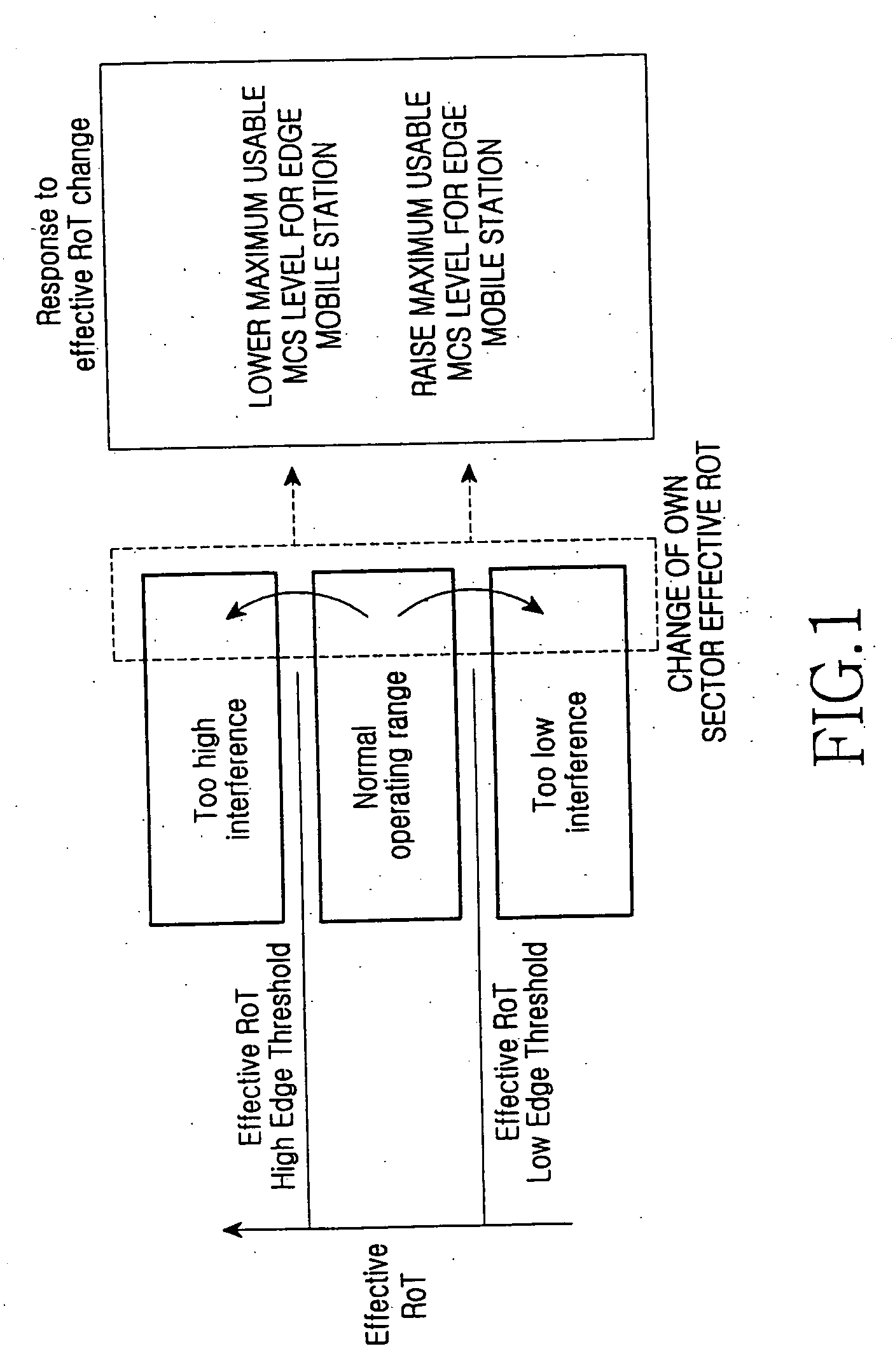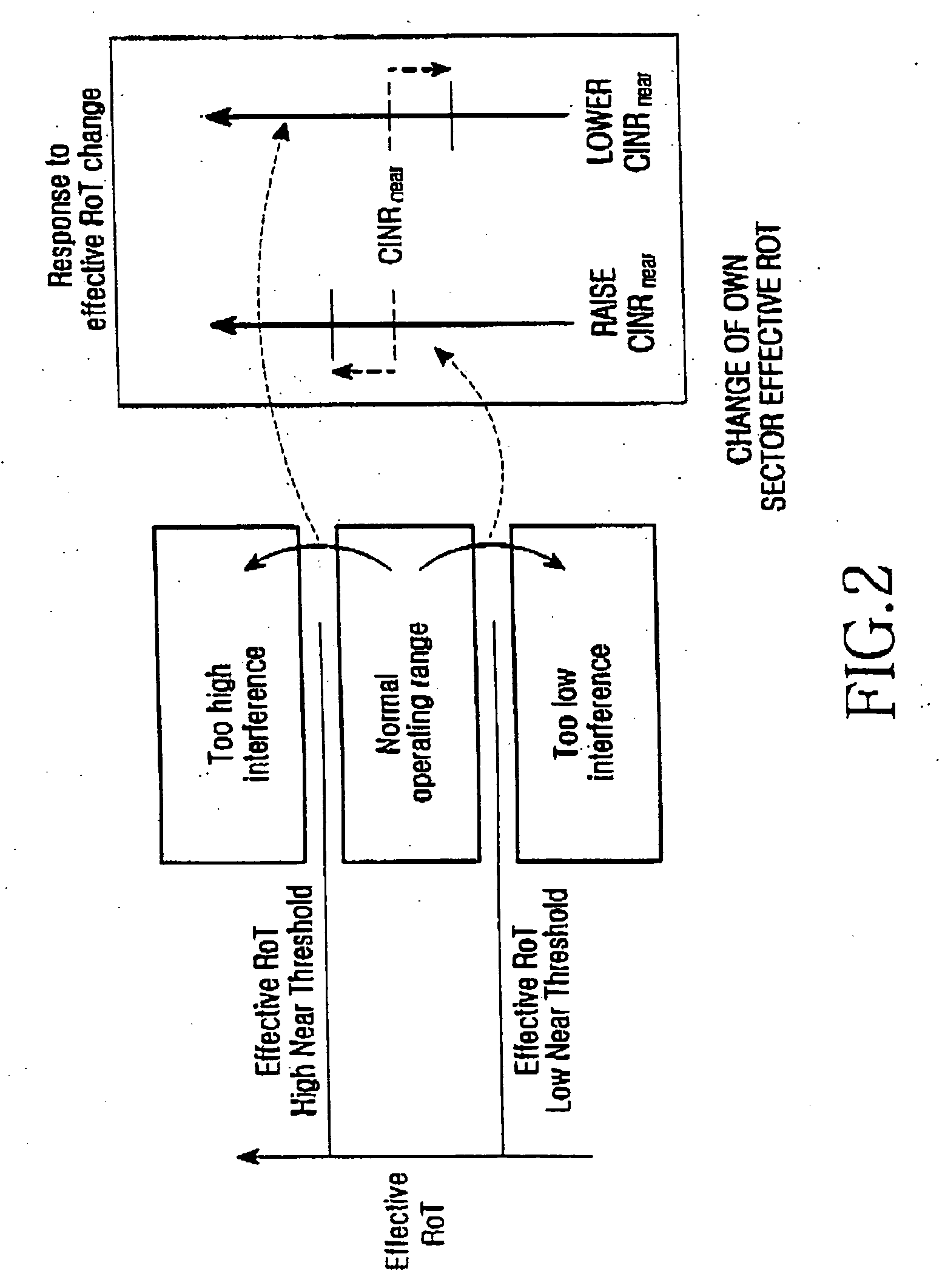Method for controlling interference in a wireless mobile communication system
a wireless mobile communication and interference control technology, applied in power management, electrical equipment, radio transmission, etc., can solve the problems of inability to use the existing method of interference control by collective adjustment of data transfer rate, data transfer rate, etc., and achieve the effect of efficient control of uplink interference signals
- Summary
- Abstract
- Description
- Claims
- Application Information
AI Technical Summary
Benefits of technology
Problems solved by technology
Method used
Image
Examples
first embodiment
[0028] Therefore, in the present invention, reference will be made to a way of controlling interference from the Edge mobile station, which causes much interference to a neighbor cell, with reference to FIG. 1.
[0029]FIG. 1 is a diagrammatic view illustrating a way of controlling interference from an Edge mobile station in a wireless mobile communication system according to the first embodiment of the present invention.
[0030] Foremost, it should be understood that a base station uses average Channel Quality Information (CQI) as a yardstick for discriminating a mobile station causing much interference to a neighbor cell from other mobile stations. In general, an Edge mobile station located at a cell edge (or having poor channel conditions) reports relatively lower CQI, and a Near mobile station located in the center of a cell (or having good channel conditions) reports relatively higher CQI. Thus, the base station sets a threshold for the discrimination between the Edge mobile statio...
second embodiment
[0035]FIG. 2 diagrammatic view illustrates a way of controlling interference from a Near mobile station in a wireless mobile communication system according to the present invention.
[0036] Referring to FIG. 2, a base station must perform an interference control for an Edge mobile station according to the first embodiment and also perform an interference control for a Near mobile station according to the second embodiment. Thus, in the second embodiment, similar to the first embodiment, an Effective RoT High Near Threshold and an Effective RoT Low Near Threshold are preset as a third threshold and a fourth threshold for controlling the interference from the Near mobile station, respectively, and a CINRNear as a fifth threshold is initially set and then is adjusted upward or downward. It is also obvious that the third, fourth and fifth thresholds may be appropriately set according to systems to be implemented. Here, the third and fourth thresholds are set for adjusting upward or downwa...
third embodiment
[0049] Therefore, in the present invention, interference control is performed using a newly set CINREdge and an average effective RoT value in place of an effective RoT value, or the CINREdge and a transition probability are applied to interference control.
[0050] Referring to FIG. 5, a base station receives effective RoT values from cells or sectors and averages them to thereby determine an average effective RoT value. If the determined average effective RoT value exceeds a target effective RoT value, the base station adjusts upward CINREdge values set in all the cells or sectors by a predetermined value. Alternatively, if the determined average effective RoT value is equal to or less than the target effective RoT, the base station adjusts downward the CINREdge values set in all the cells or sectors by a predetermined value. The downward adjustment of the CINREdge values makes it possible to reduce the number of mobile stations to be determined as an Edge mobile station. That is, th...
PUM
 Login to View More
Login to View More Abstract
Description
Claims
Application Information
 Login to View More
Login to View More - R&D
- Intellectual Property
- Life Sciences
- Materials
- Tech Scout
- Unparalleled Data Quality
- Higher Quality Content
- 60% Fewer Hallucinations
Browse by: Latest US Patents, China's latest patents, Technical Efficacy Thesaurus, Application Domain, Technology Topic, Popular Technical Reports.
© 2025 PatSnap. All rights reserved.Legal|Privacy policy|Modern Slavery Act Transparency Statement|Sitemap|About US| Contact US: help@patsnap.com



